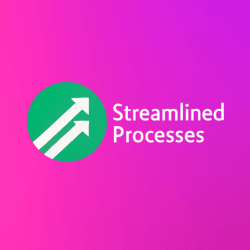For Subscription Invoicing Platforms, see our main page here.
What Are Subscription Invoicing Platforms?
Subscription Invoicing Platforms are software tools designed to automate recurring billing for services or products delivered on a subscription basis. They help businesses send invoices, collect payments, and manage customer subscriptions efficiently. As a result, these platforms reduce manual labor and improve cash flow consistency.
Modern subscription billing models are widely used across industries—from SaaS companies and streaming services to subscription boxes and fitness apps. These platforms ensure predictable revenue by billing customers on a consistent schedule, whether it’s weekly, monthly, or annually.
Why Businesses Rely on Subscription Invoicing Platforms
More organizations are moving toward recurring revenue models. Therefore, Subscription Invoicing Platforms have become critical in supporting this shift. Automation ensures accuracy, while integrations with payment gateways reduce friction during checkout.
To clarify, without the right tools, handling thousands of customer accounts manually would be chaotic. In contrast, these platforms streamline the entire process—from sign-up to cancellation—saving both time and money.
Benefits of Using Subscription Invoicing Platforms
- Automated Billing: Recurring charges are processed without manual intervention.
- Improved Cash Flow Visibility: Forecasting and revenue monitoring become easier.
- Customer Self-Service: Users can update billing details and manage plans online.
- Error Reduction: Invoices are accurate with less human interference.
- Flexible Pricing Structures: Supports tiered billing, freemium models, or usage-based charges.
Popular Platforms Compared
Choosing the right Subscription Invoicing Platform depends on your company’s size, billing complexity, and integration needs. Here’s how some top contenders compare:
- Chargebee: Ideal for startups and growing SaaS firms. Offers robust APIs, dunning management, and multi-currency support.
- Recurly: Best for high-volume subscriptions. It focuses on customer retention and revenue optimization.
- Zuora: Enterprise-focused, with abundant customization options and reporting tools. Used by brands like Zoom and Ford.
- Stripe Billing: Works well for developers. Seamlessly integrates with other Stripe services.
- Subbly: Built specifically for subscription box businesses. Includes eCommerce tools and CRM features.
Features That Matter Most
While most Subscription Invoicing Platforms offer similar foundational functions, some go beyond the basics. Features that differentiate premium tools include:
- Advanced Reporting: Real-time analytics with lifetime value predictions and churn rate insights.
- Tax Compliance Support: Automated tax rules, especially helpful across multiple jurisdictions.
- API Access and Webhooks: Enables developers to create customized billing flows and dashboards.
- Dunning Management: Automates reminders and retries for failed payments to reduce churn.
- Global Payment Gateways: Support for popular processors like PayPal, Razorpay, Stripe, and more.
Real-World Application: A SaaS Case Study
A U.S.-based SaaS startup, which scaled from 500 to 25,000 users in under 18 months, relied on Subscription Invoicing Platforms to handle the rapid growth. Initially, they used spreadsheets and manual invoicing, which led to errors, late payments, and customer dissatisfaction.
After switching to Chargebee, they automated billing, implemented self-serve portals, and reduced churn by over 30%. As a result, their support team reclaimed over 50 hours per month. Most importantly, customer trust improved thanks to accurate, timely invoices.
Industry Trends Driving Adoption
The global shift towards subscription-based services has significantly changed how companies think about billing. According to a report by Deloitte, 70% of businesses are experimenting with subscription models in some form. Similarly, McKinsey notes that subscription commerce has grown by over 100% annually over the last five years.
Meanwhile, consumer expectations for flexible billing and seamless checkout experiences have driven innovations in Subscription Invoicing Platforms. For example, many modern platforms now support real-time currency conversion, AI-driven pricing tools, and embedded invoicing within apps.
What to Watch Out for When Choosing Subscription Invoicing Platforms
While these tools offer many benefits, not all platforms are created equal. Cost, scalability, and support are key areas to evaluate. Above all, ensure the tool matches your business model and customer journey.
Some common pitfalls include:
- Hidden Fees: Per-transaction fees or added charges for integrations can raise your actual cost.
- Limited Flexibility: Inflexible pricing plans or workflows may limit your marketing strategies.
- Poor Customer Support: Delayed issue resolutions can impact revenue collection.
Most importantly, trial periods and user reviews can offer insights before you commit. Ask for demos and review case studies relevant to your niche.
Integrating with Other Business Tools
Subscription Invoicing Platforms often connect with CRMs, marketing software, accounting systems, and helpdesks. This helps unify your customer data and streamline operations. For example, integrating your invoicing platform with accounting tools like QuickBooks can eliminate manual data entry.
Moreover, syncing with platforms like HubSpot or Salesforce can ensure sales and billing teams operate from the same data source. Consequently, this reduces errors and speeds up support response times.
Frequently Asked Questions (FAQ)
Can Subscription Invoicing Platforms handle multiple currencies and tax jurisdictions?
Yes, most modern platforms support international invoicing. They calculate taxes based on your customer’s location and comply with local regulations, such as EU VAT or U.S. state sales tax.
Do these platforms support usage-based billing?
Absolutely. Many Subscription Invoicing Platforms allow brands to charge based on usage, such as minutes used, storage consumed, or API calls made.
How secure are these platforms for payments?
Reputable platforms use PCI-DSS compliance, data encryption, and secure gateways. Always verify their certifications and uptime guarantees before signing up.
Can startups afford these tools?
Yes. There are budget-friendly options, and many platforms offer startup programs, free tiers, or usage-based pricing to stay cost-effective as you grow.
Is setup difficult for non-tech users?
Not necessarily. Many vendors offer onboarding help, no-code tools, and clear documentation. However, complex use cases may need a developer’s input.
Final Thoughts on Subscription Invoicing Platforms
Subscription Invoicing Platforms are no longer a luxury—they are essential for scaling recurring revenue models. Whether you’re launching a subscription box business or running a global SaaS company, automating your billing saves time, boosts revenue, and enhances the customer experience.
This article was created with the assistance of AI tools and reviewed by our team at Streamlined Processes LLC to ensure accuracy and relevance.
Follow us on Facebook here.

